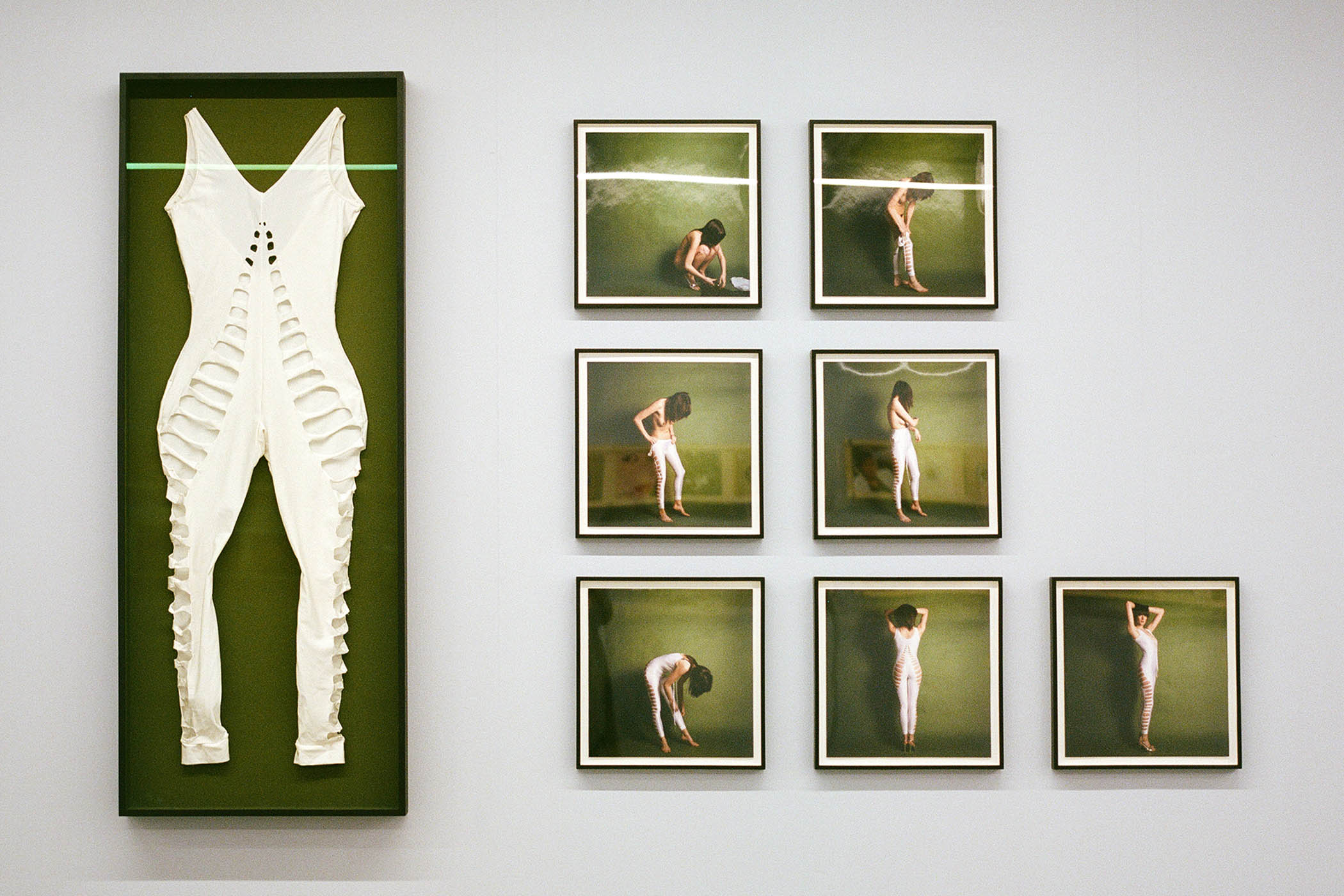Cosey Fanni Tutti had a busy October in 1976. Meticulously detailed in the small pages of her diary are meetings with the British Council, reminders to book a stripper, get a fake tan and withdraw drachma for a trip to Greece to shoot explicit pictures for the porn mag Men Only. Tutti, her diary reveals, returned at 7am on the 16th of that month to set up Prostitution, the ICA retrospective that featured the first full performance by the pioneering electronic music group Throbbing Gristle. It led to tabloid fury and to the band being described in parliament as “wreckers of civilisation”.
The diary forms part of Incognito, a new exhibition at Hull’s Humber Street Gallery that brings together Tutti's work in the 70s and early 80s sex industry. Last week, Tutti walked me around the exhibition, which tells the extraordinary story of her life. There are outfits worn for pub striptease, a wall of 7” singles that she danced to while performing, photographs both from porn magazines and of performances that took place in art institutions. These are illuminated by vitrines of ephemera including letters from model agencies and even the front cover of a November 1980 edition of the Sunday Times, on which she appeared in a silver bikini for an article called “Everything You Can Hire – Stripper £115 Per Hour”.
Tutti was born up the road from the gallery in 1951, and her Hull accent is still strong if softly spoken as she fights off the dregs of a cold. As striking today as in the 70s, she is matter of fact and deadpan as she describes her work to me. “What I’ve done is not an invasion of my privacy,” she says. “I’ve surrendered in certain aspects – but as a Scorpio, nobody gets 100% of me.”
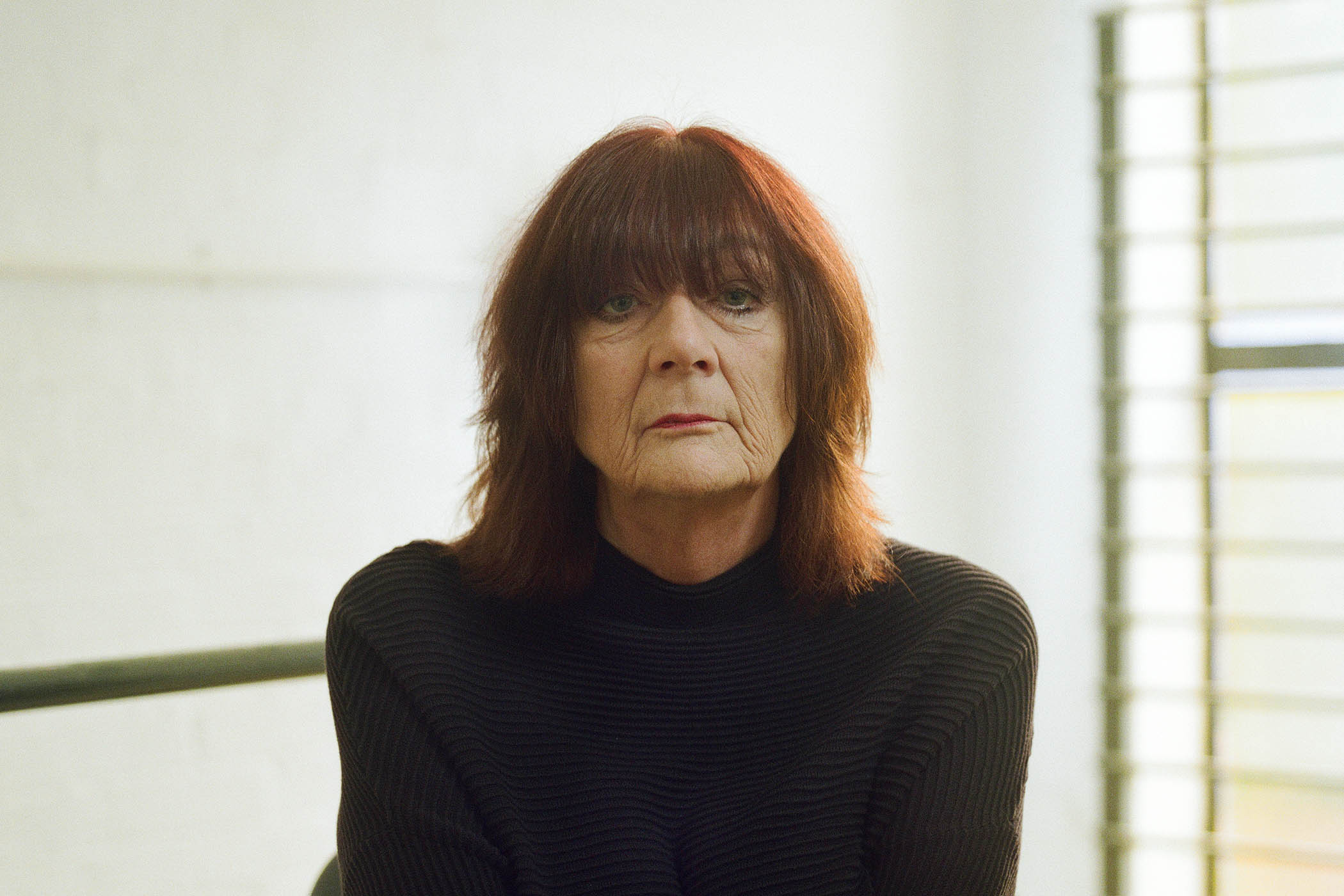
Cosey Fanni Tutti released a solo album, 2t2, earlier this year. Main Image: from the Incognito exhibition
Tutti doesn’t suffer fools: in interviews over the years, I’ve seen her give looks that could melt the Hull gallery’s iron pillars. She has had to be tough. Aged 17, she was thrown out of the family home by her dad, who destroyed all her possessions, including school artwork. She tells me that her “fastidious” approach to archiving the minutia of her life and work stems from that moment, and having had to build herself back up from nothing. She founded the group COUM Transmissions (the acronym stands for Cosmic Organicism of the Universal Molecular) with her then-partner Genesis P-Orridge in 1969. They squatted in houses not far from the Humber Street Gallery, which was then a fruit warehouse where the impoverished artists “scrudged”, as they called it, for free food. Incognito is therefore a homecoming, of sorts.
As Tutti says, Hull is where it all began. In the first display is a black lace top, bought in a jumble sale and worn in her first photoshoot. Shortly before she left for London in 1973, a friend involved in mail art asked Tutti to be Miss Gateway to Europe as part of a project marking Britain joining the EEC, and asked for her to send some pictures. She used the resulting session to also shoot nudes, and as soon as she was in London, she began modelling for amateur photographers and adult magazines. Her work as a stripper, dancing lunchtimes and evenings in pubs in the London area, started a few years later. A wall in the gallery is covered in 7” singles, each of them marked Scarlet, Tutti’s stripper name. “It came from Scarlet woman,” she says. Scarlet was a blank canvas who would become different characters depending on the audience.
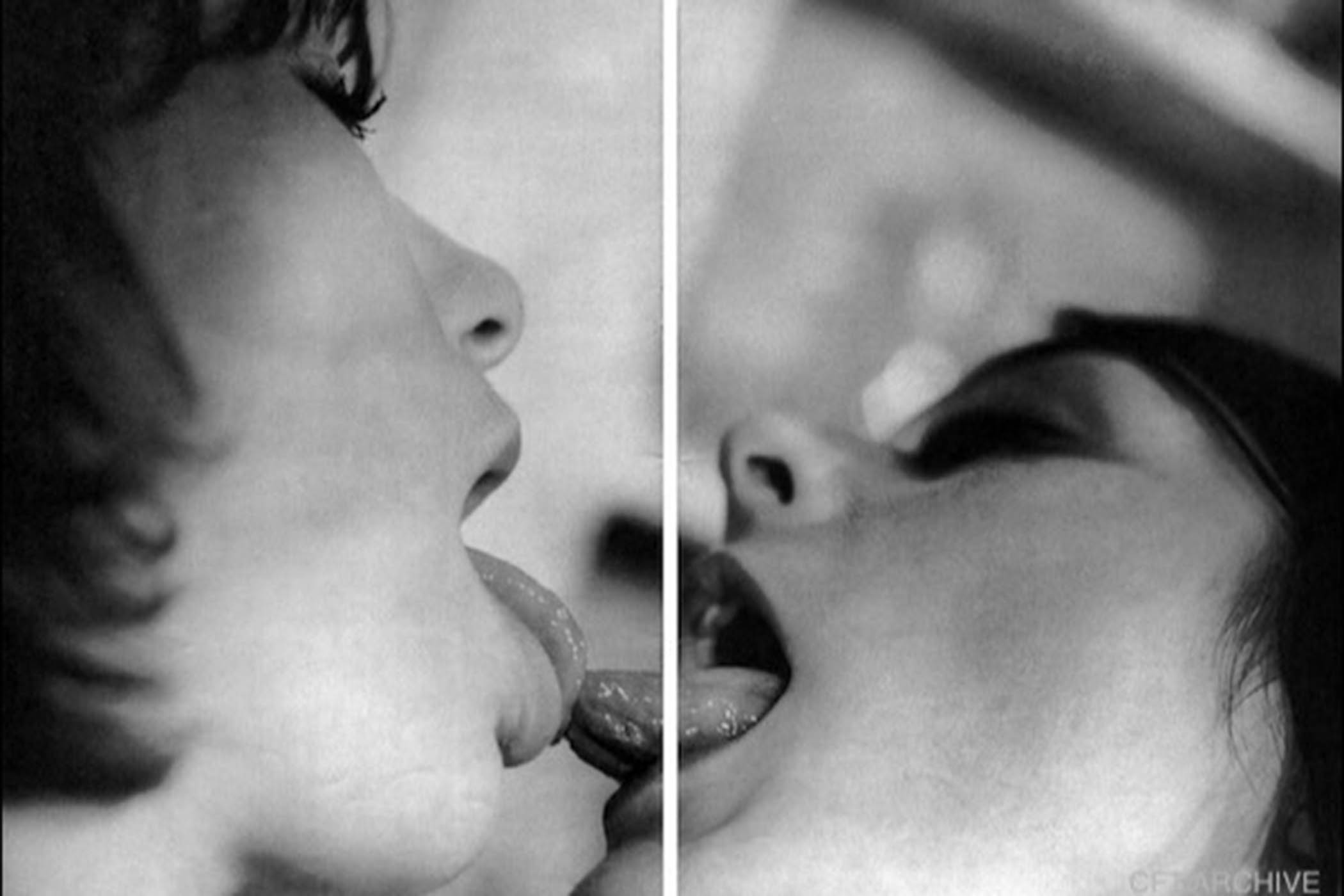
Tutti’s work The Kiss
“I had to make sure it had a connection with the people I was dancing to,” she says. This was done through outfits and music – bikers liked rock, the police preferred Leo Sayer, while in Dagenham the Ford factory workers liked the mechanical pounding of Captain Beefheart, a parallel with the industrial music she was inventing in Throbbing Gristle. She’d collect money in a glass before each striptease: “You’d want silver – if they gave coppers I’d give them back.” A job as a secretary had paid £25 a week: she could earn that in a lunchtime stripping, tripling on a Friday, payday or around Christmas. Not that the work was easy, or safe. She would take trainers with her, in case the audience became sexually aggressive and she needed to make a quick getaway.
“I didn’t learn anything new about men,” she says. “I knew what they were like all along.” Tutti endured years of physical, sexual and psychological abuse from P-Orridge, as detailed in her 2018 memoir Art Sex Music, and was expected to take on a traditionally female role in COUM’s squat on Beck Road, Hackney – “chocolate cake on Friday, spaghetti Saturday, Sunday lunch”. Her earnings in the sex industry subsidised the running costs of Beck Road and Throbbing Gristle’s label, Industrial Records, even after she’d left P-Orridge.
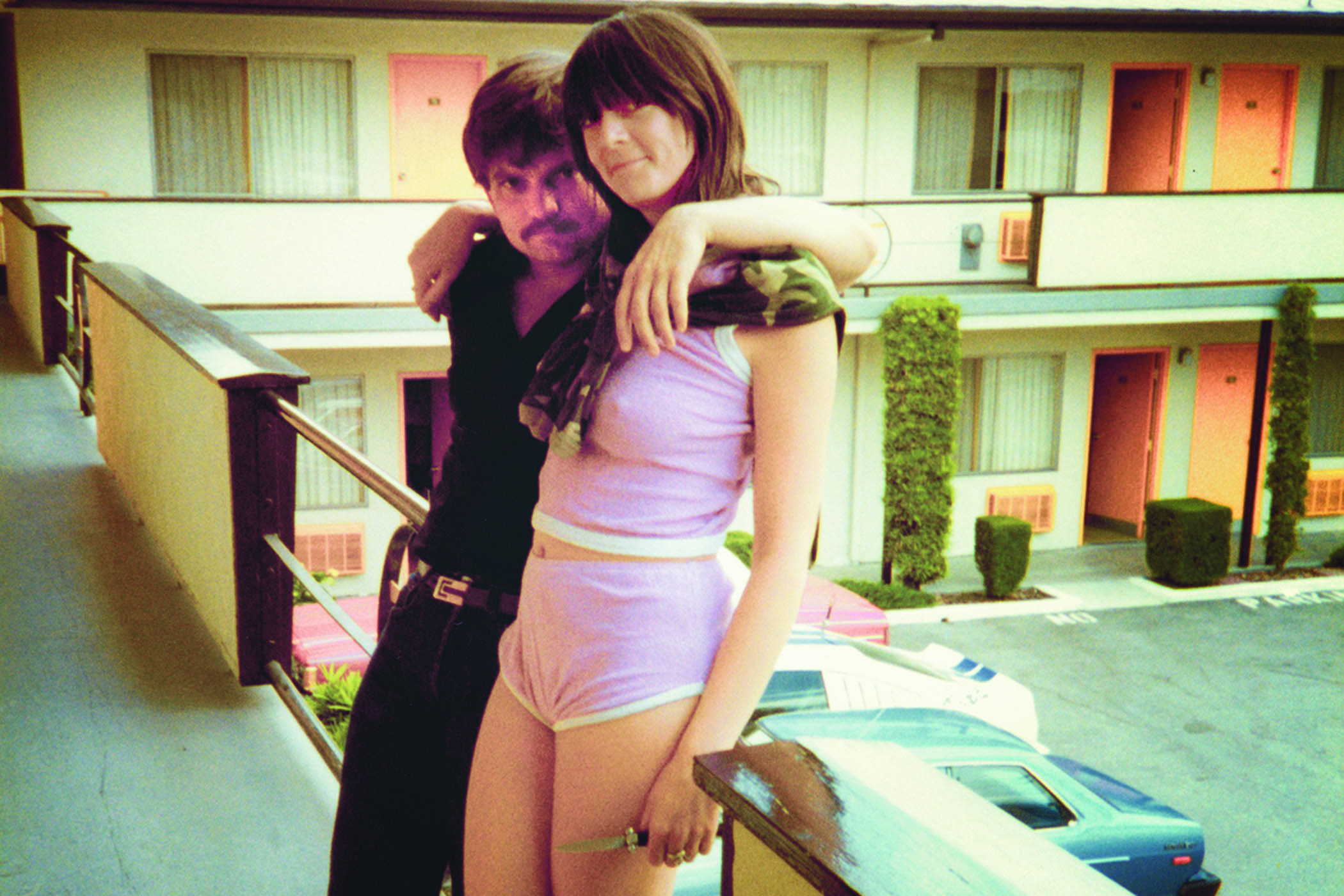
Tutti with artist Skot Armstrong in Los Angeles
Tutti’s resilience is just as evident half a century on, and her personal mantra that “my life is my art, my art is my life” gives Incognito its coherence. As we walk around the gallery, Tutti takes a particular delight in showing how everything connects, even the everyday objects. In one vitrine is a bag she made out of British Army camouflage material. It was cut from a shirt given to her by a pupil at Oundle, a private school, after a Throbbing Gristle performance in 1980 that so disturbed the pupils that they burst into a spontaneous rendition of Jerusalem. Cosey used the bag to carry home the money she’d made from striptease.
Incognito concludes with the work that gives the exhibition its name. A white body suit modified by Tutti with slashes in the material is pinned in a wall-mounted vitrine. Next to it are a series of images of her putting it on, rather than undressing, in front of a rich green background. The images were shot by Tutti’s late Throbbing Gristle bandmate and close friend Peter “Sleazy” Christopherson, who was gay. She’s visibly moved when talking about him. “I loved men, and he loved men; we had that in common, and that’s what made it a special relationship,” she says. Tutti says that she felt Christopherson’s sexuality meant he couldn’t take “sexy” shots of her, and the resulting images have a different kind of intimacy to the posed photos from pornographic magazines.
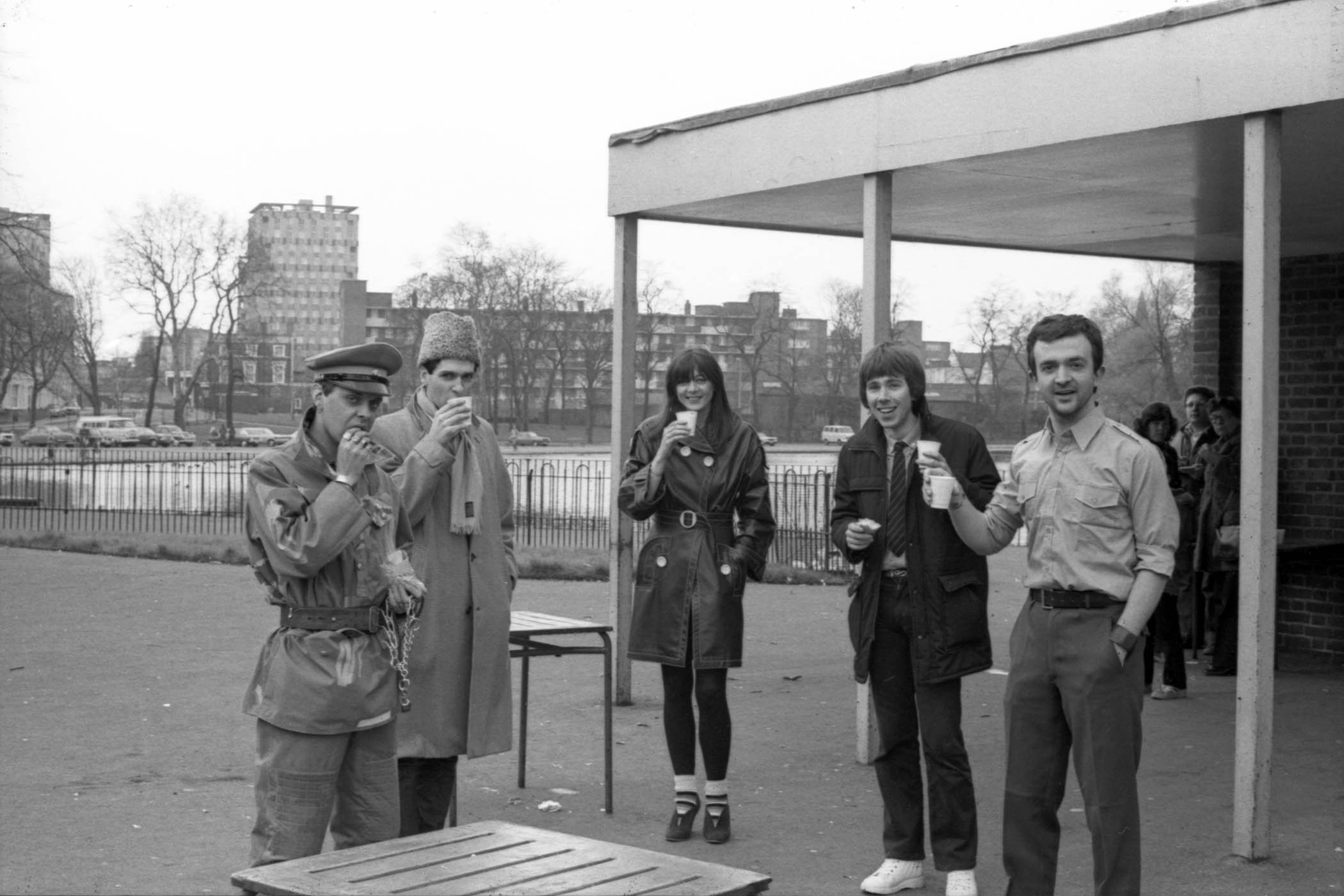
Journalist Jon Savage, second from left, with Tutti and her Throbbing Gristle bandmates, from left, Genesis P-Orridge, Chris Carter and Peter 'Sleazy' Christopherson in 1981
Tutti says the images in Incognito are a “private language” that connect her present with her past, but also carry this dialogue with her audience. The same goes for her work in pornography, striptease, performance art, or music – in Throbbing Gristle, in Chris & Cosey with her partner in love and work Chris Carter, or in her solo records.
Tutti’s work in the sex industry, and her music, were once perceived as transgressive, an interpretation that can obscure Tutti’s profound generosity of spirit.
I first encountered this at gigs by Throbbing Gristle and Chris & Cosey’s later incarnation, Carter Tutti. Although room-shakingly loud, these were never brutal sonic assaults, but a warm embrace. Similarly, Incognito explores the connections Tutti made through the presence and movement of her body, a meditation on the relationship between audience and performer, voyeur and exhibitionist. They are all, she says, “a private expression of life, putting it out there, and other people receiving it. I just love human beings and I like to share, and if it’s mutual enjoyment, that’s all the better.”
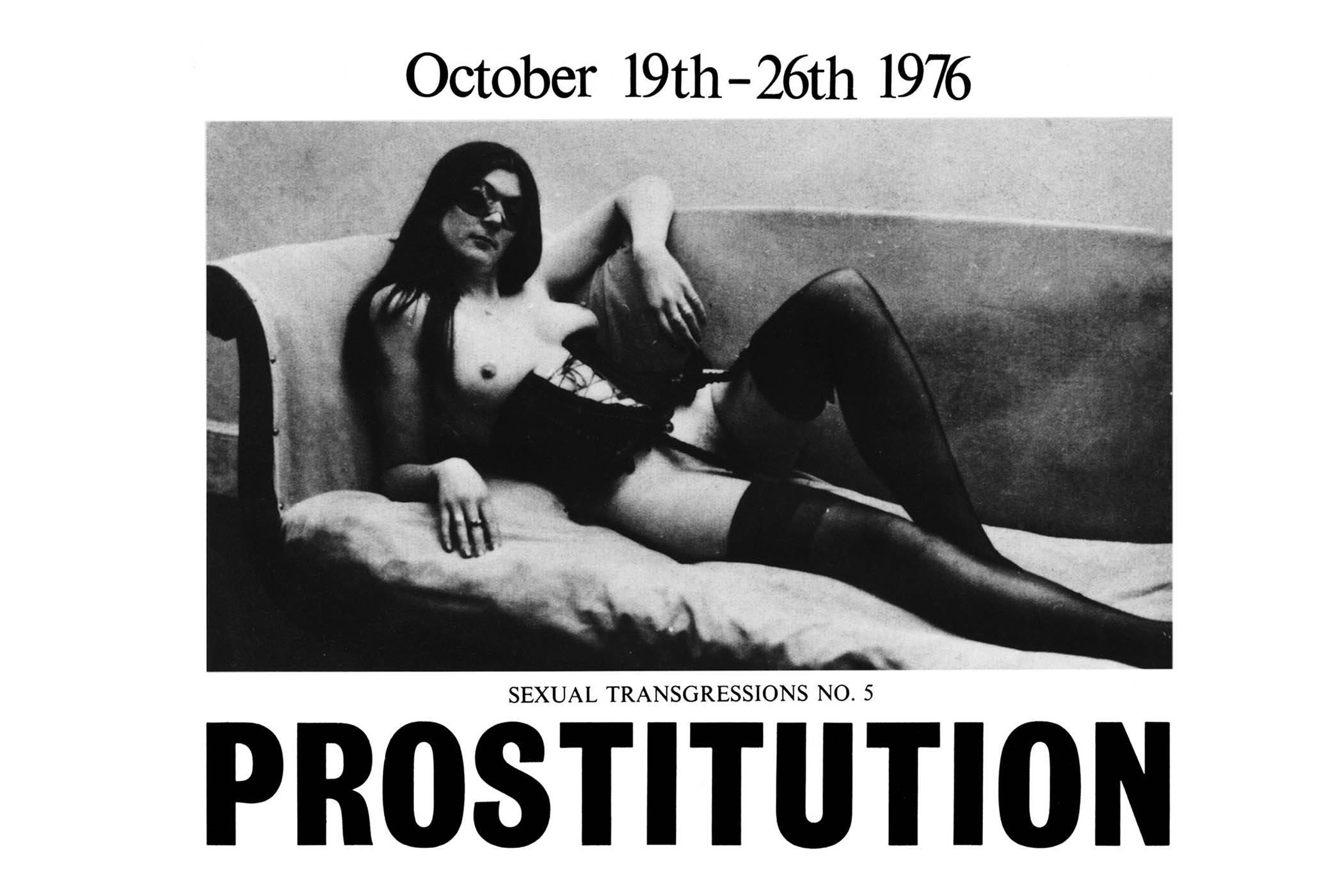
A poster for an exhibition at the ICA that featured the first ever performance by Throbbing Gristle
Tutti’s work has historically been siloed: the pornography here, the performance art there, her writing and musical career somewhere else. Incognito, taking place shortly after the release of Tutti’s critically acclaimed solo album 2t2 and her recognition with an Innovator award from the music industry body AIM, is part of a process of breaking down these externally imposed perspectives and limitations. Striptease influenced Tutti’s movements in her gallery performances; the disco records she danced to inspired Hot On the Heels of Love, Throbbing Gristle’s most accessible track. Bondage rope she wore for a 1979 performance at the Hayward Gallery appeared on the sleeve of Chris & Cosey’s 1984 album Songs of Love and Lust.
Next year will mark the 50th anniversary of the formative year recorded in those tiny diary pages. Before I leave, I suggest to Tutti that not many people get to see quite as many pictures of their younger selves naked as she has, so many years on. Is it a strange experience?
“It’s not odd to see it,” she says, “because it’s my work, what I wanted to do.” As she moves through her mid-70s, that work continues. “What are you going to do with your life unless you go out there and do something that’s new, that is a little bit of a risk, but exciting as well?” she asks. “I don’t want to sit back and coast through life and just fade away.”
Incognito is at Humber Street Gallery until 25 January
Photographs by Saesha Blue Ward, Chris Carter, Industrial Records, Cosey Fanni Tutti
